
Who We Are
High Peaks Birders had its beginning with the monthly strolls offered by High Peaks Trail Association starting in March 2014. Laura Seelbach and Bob Repoley led the strolls and eventually went on to organize the Yancey County Christmas Bird Count later that year. Both the strolls and the CBC were well attended by birders and nature lovers from expert to beginner.
Springing from these successful ventures, a core group of interested people met in January 2015 with the intention of exploring the possibility of starting a birding club in Yancey County, which was eventually called “Yancey Birders”. The core group, now known as the OWLS, began organizing birding activities in the county and at the same time opened up discussions with High Peaks Trail Association about coming under the “wing” of High Peaks.
In May 2015 after organizing two successful general meetings and contributing to other birding activities in Yancey County, Yancey Birders joined High Peaks Trail Association and took the new name of High Peaks Birders. All of our events are free and open to the public. We do not have a formal membership. Anyone who comes to an event or meeting can choose to be on the High Peaks Birders mailing list and receive our occasional Newsletter. If you do not receive our Newsletter and would like to, simply click on the link “Subscribe Mail List” at the top right of this page. We encourage all birders to join High Peaks Trail Association and support the people who support us.
The OWLS continue to meet once a month to plan programs and activities. These meetings are open to the public. Please feel welcome to attend and take part in what we are hooting about. We also offer monthly birding strolls at Cane River Park and maintain a growing list of birds spotted during these outings. Check out the High Peaks Monthly Activity Calendar for more details. For some tips on birding, please read our Birding Etiquette Guide.
Upcoming Events
Stay tuned for more outings...
Food Waste, Major Cause of Raptor Death:
After seeing a dead screech owl on Hwy 80 recently, I thought I’d pass along a bit of knowledge I learned when working at a Raptor Center years ago. One of the leading causes of death for raptors is getting hit by cars. This happens frequently because people throw food waste out their windows while driving (like apple cores, banana peels, and food wrappers). These food scraps attract mice and other rodents, which in turn attract birds of prey. The birds get spooked by passing cars and often try to fly away over the road since that’s often the most open flight path. Many of these amazing creatures get seriously injured or die this way. I know most of us don’t “litter”, but many of us still throw out biodegradable food scraps thinking it’s harmless. Please be aware that it causes lots of harm to hawks, owls, kestrels, and other majestic winged creatures.
Account of May 4 Trip to Mt Mitchell:
Ten High Peaks Birders observed 25 species of birds in 2-1/2 hours at Ridge Junction on the Blue Ridge Parkway, at the entrance to Mt. Mitchell State Park, Saturday morning May 4. The drive up started in fog, but ended in beautiful skies and a light breeze, perfect conditions for birding.
The birds themselves were in fine fettle, sporting brilliant fresh spring plumage and feeling their oats with a gorgeous chorus of song. Spring migration was nearly over, and it was time for them to settle down, find mates, build nests, and begin to raise families.
Some of the species observed included Blackburnian, Chestnut-sided, Canada, Yellow-rumped, and Black-throated Blue Warblers, Rose-breasted Grosbeak, Common Raven, Veery, Red-breasted Nuthatch, Hairy Woodpecker, and Least Flycatcher. A large, long-tailed Luna Moth just out of its cocoon made a cameo appearance. We birders left the scene elated by what we had seen and made it home before the afternoon rains.
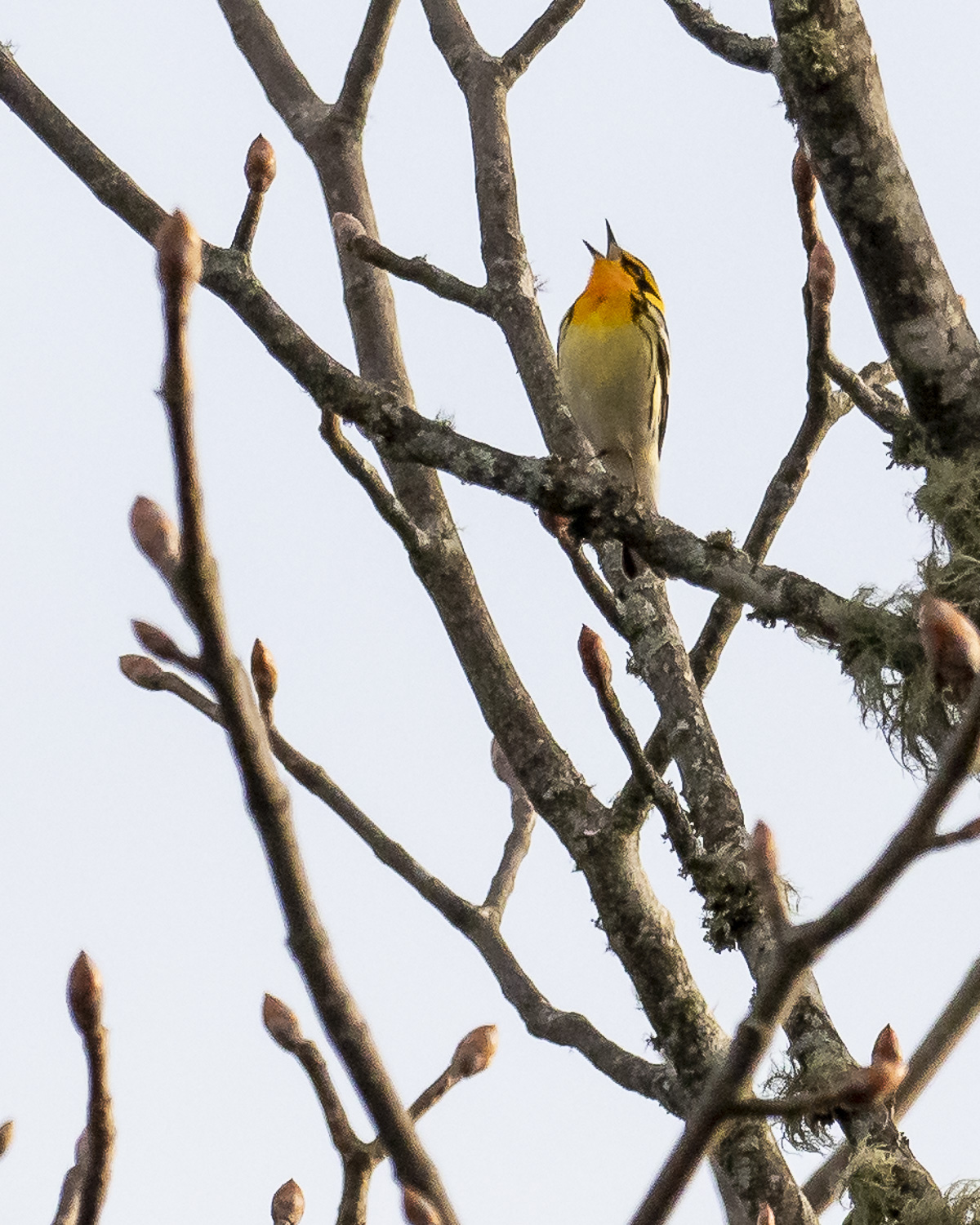
Blackburnian Warbler - photo by Steve Buettner
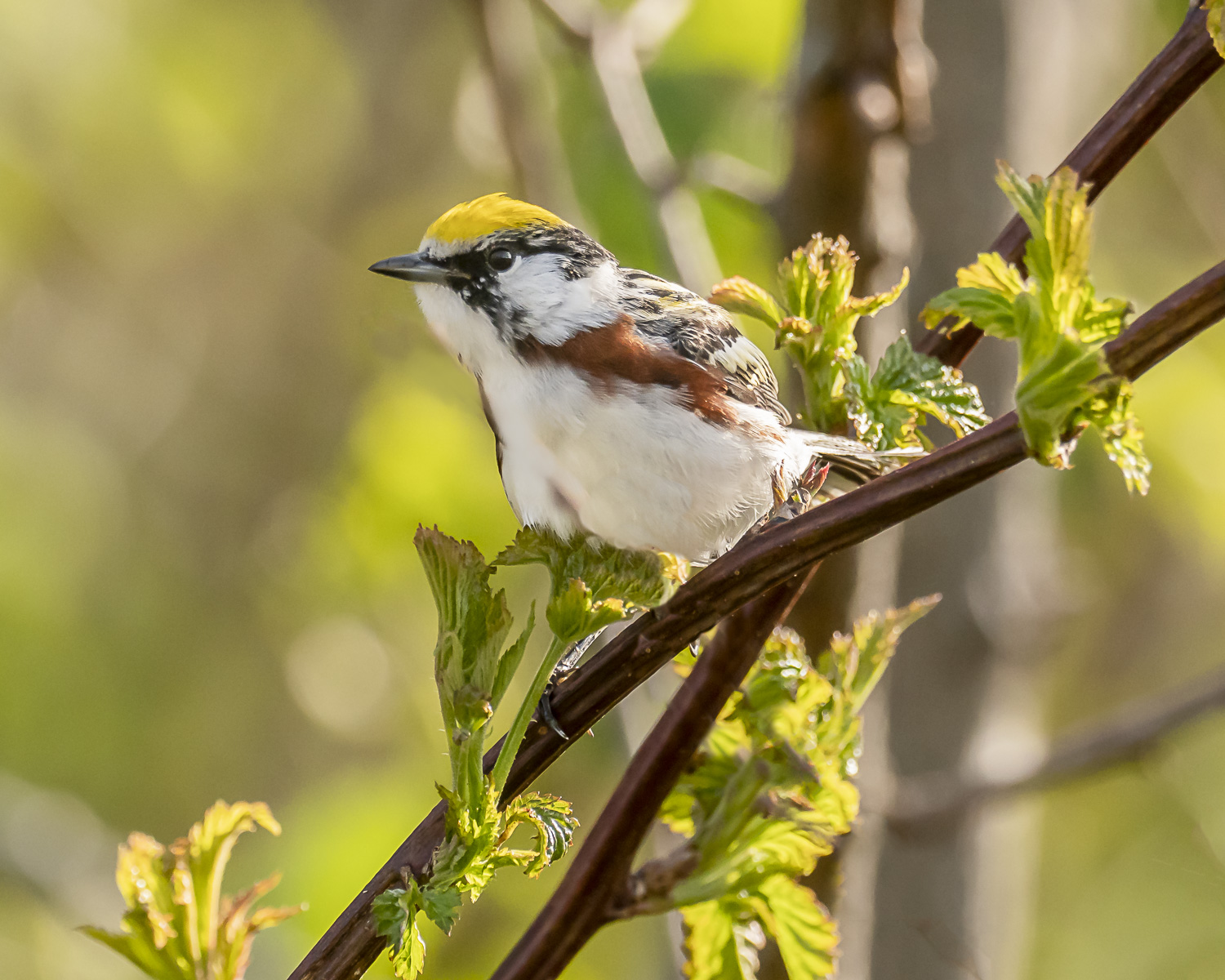
Chestnut-sided Warbler - photo by Steve Buettner

Rose-breasted Grosbeak - photo by Laura Seelbach
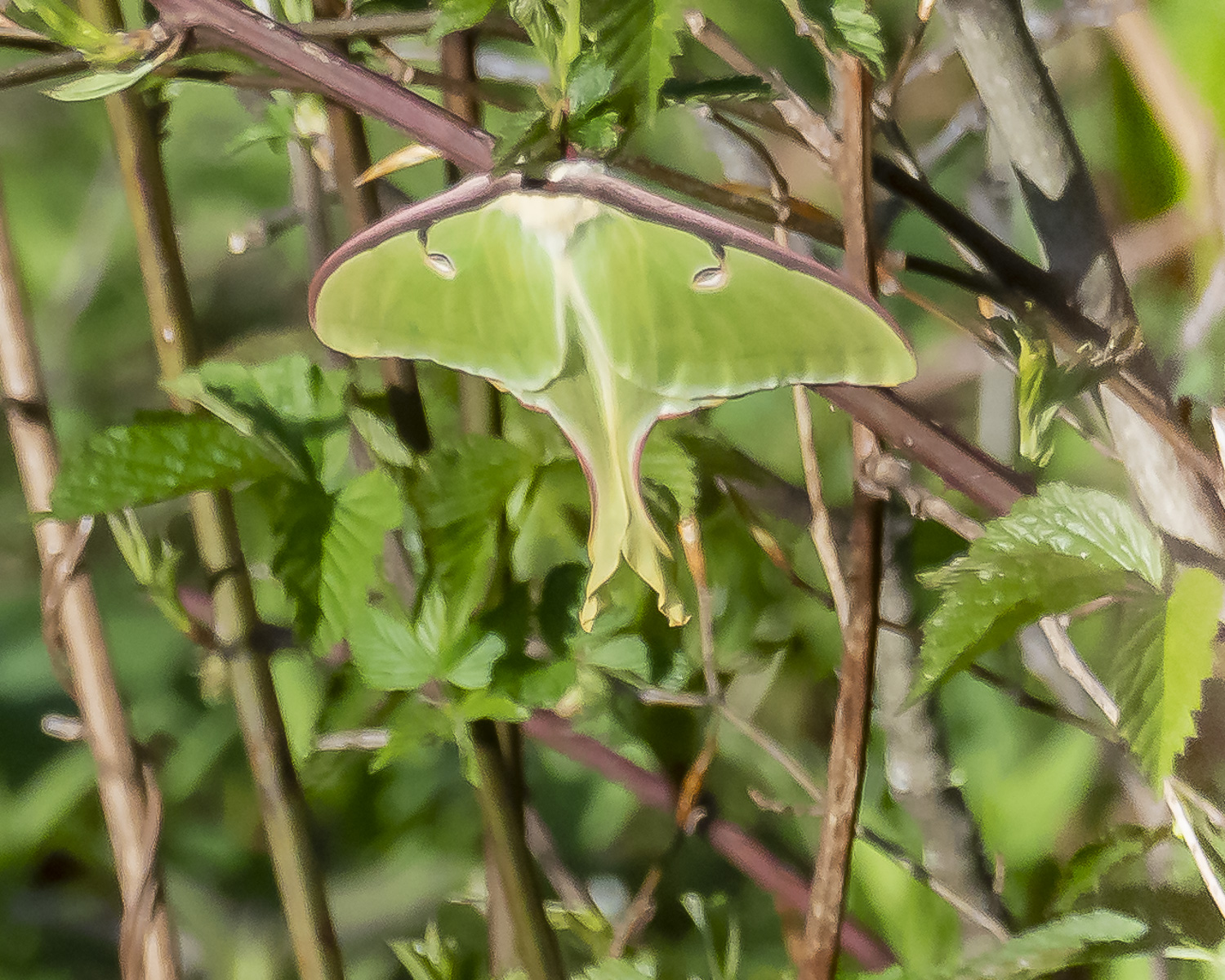
Luna Moth - photo by Steve Buettner
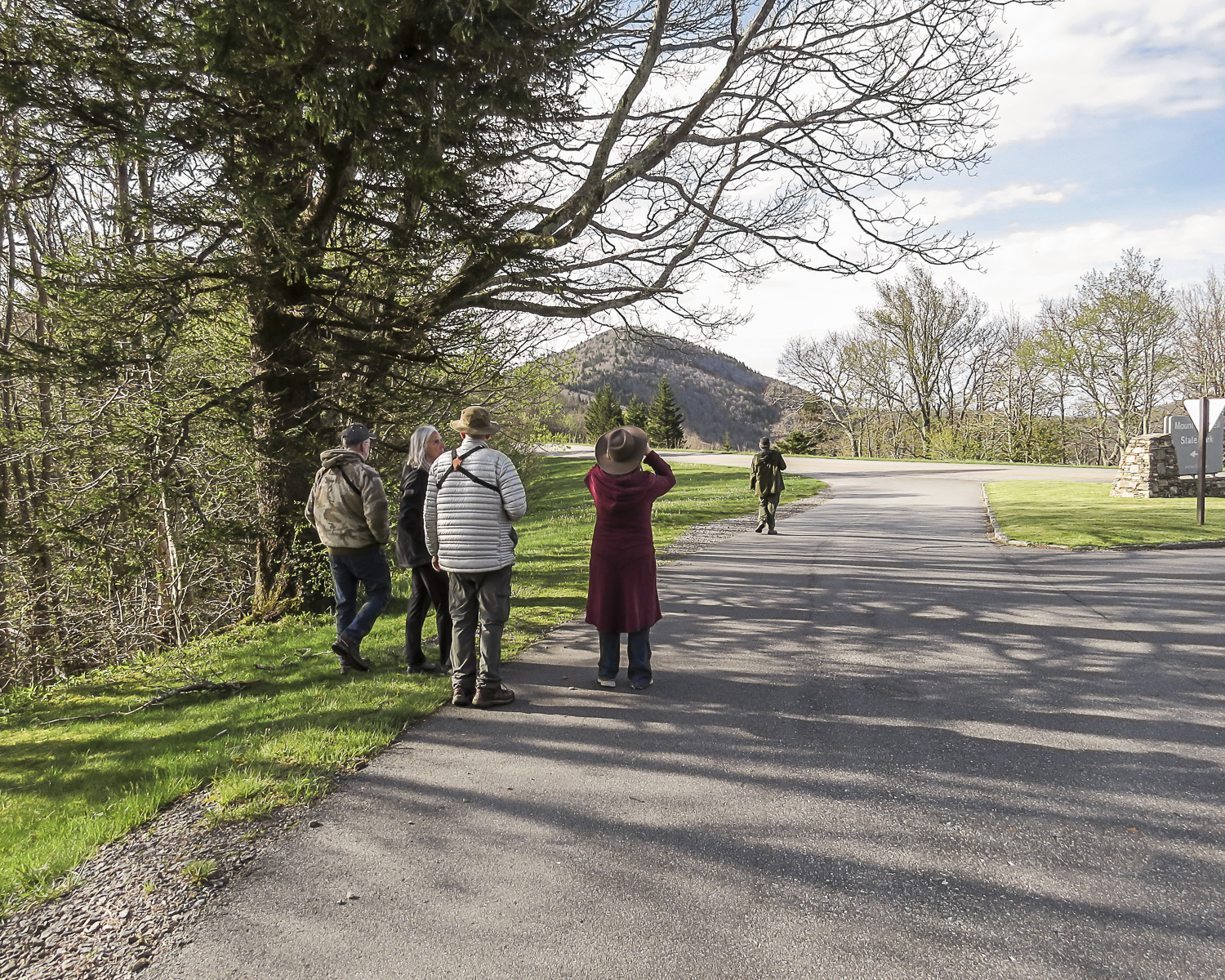
Part of the Birding Group - photo by Laura Seelbach
Bird of the Year: Eastern Bluebird
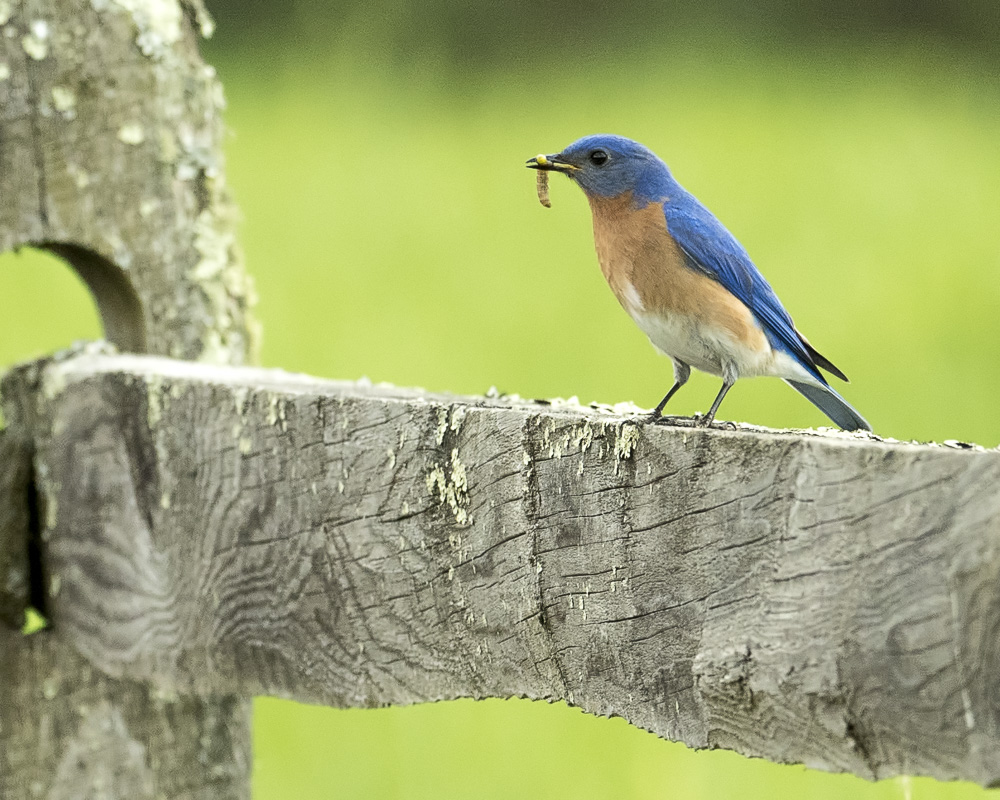
Found only in North America, bluebirds are popular birds, with their bright colors and soft singing. They nest in cavities, which left them vulnerable to introduced starlings who outcompeted them for spaces. The enthusiasm for putting up nest boxes has helped them bounce back in recent years. The Eastern Bluebird is the one found in our area, breeding in semi-open territories with good perches and nesting chances. The male is the one with bright blue feathers. His mate will carry less blue and be a bit duller. They can be found year-round here in Yancey County, feeding on insects and berries primarily. The eggs are blue (what else?) and incubated mostly by the female. Both parents feed the nestlings.
Photo credit: Steve Buettner, photographer for High Peaks Birders and High Peaks Trail Association.
Bob's Bluebird Houses
To honor Bob Repoley and all the work he did for birds and the High Peaks Birders, Laura Seelbach and Russ Oates are placing 10 memorial Bluebird nestboxes around Yancey County. These nextboxes were made by Bob and Russ and can be found at the following locations: Cane River Park, Mountain Heritage High School, Carolina Native Nursery, Yancey County Humane Society, and Mountain Aire.


Other Links Of Interest
Make A Plastic Bottle Bird Feeder: Learn how to recycle materials into something useful and find other great information about bird watching, bird identification, and ways to help the birds.
Flowers and Plants to Attract Birds and Other Wildlife: A fantastic collection of information for gardening for birds and other pollinators. It even includes information on building bird-feeders and shelters and general bird watching basics.
Beginner’s Guide to Bird Watching Around Your Home : This is a great source of information about birding for beginners.
May Wildlife Rehab Center: This is an outstanding rehab facility for injured or orphaned birds and other wildlife located on the Lees McRae campus in Banner Elk, NC.
Cornell Lab of Ornithology: A great site for bird ID and bird webcams.
National Audubon Society and Audubon of North Carolina
Carolina Bird Club: A birding club spanning North and South Carolina.
Partners In Flight: An organization that coordinates international efforts to conserve bird populations in the Western Hemisphere.
Bird Note: Podcasts and stories about birds, the environment, and more.
Big Bald Banding: Southern Appalachian Raptor Research and banding station in Madison County, NC.
Carolina Native Nursery: A great source for native plants that will attract birds and other wildlife.
Creating Wildlife Habitat in Your Backyard: Information on attracting all kinds of wildlife to your property as well as links on how to create a certified wildlife habitat.
Beginner's Guide to Birdwatching: Tips and ideas for blossoming birders.

